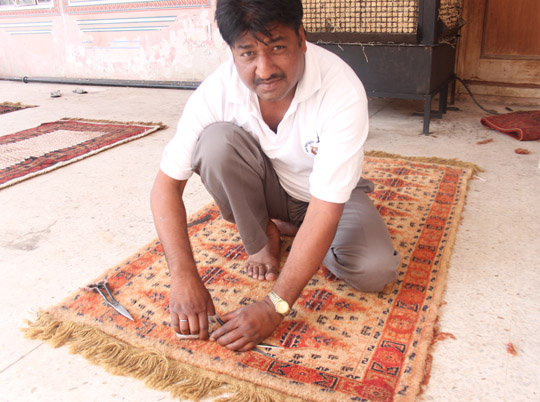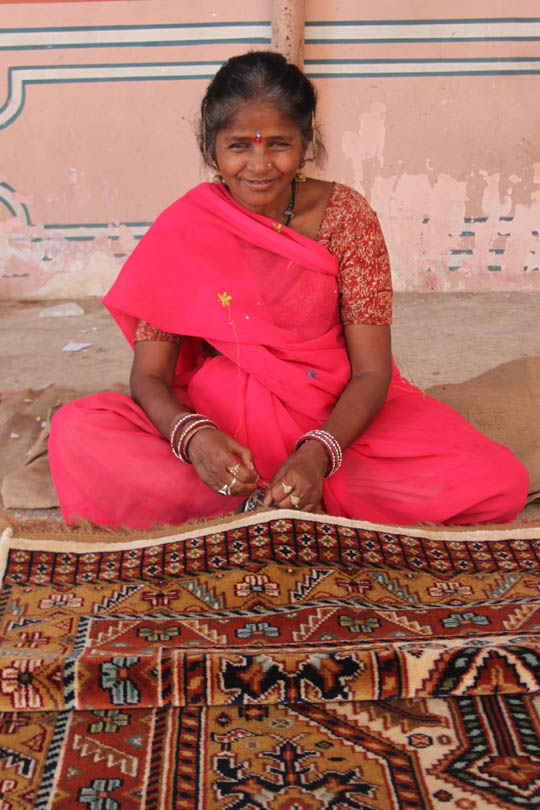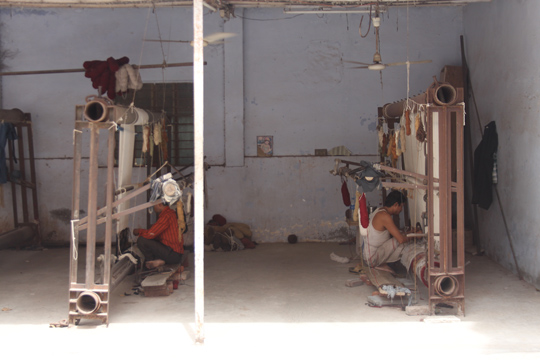
Die Teppichproduktion wurde vermutlich im 16. Jahrhundert vom Großmogul Akbar (1556-1605) in Indien eingeführt. In seinem Palast fertigten persische Teppichknüpfer die ersten indischen Teppiche mit persischen Mustern aus feinster Schafwolle und Seide. Einige Zeugnisse gibt es auch schon seit dem 11/ 12. Jahrhundert. Nach der Selbständigkeit Indiens im Jahre 1947 nahm die Teppichproduktion einen neuen Aufschwung. Die meisten Teppichknüpfer flüchteten zwar nach Pakistan, jedoch wurden in Indien schnell eigene Nachwuchskräfte ausgebildet. Indien ist heute ein großes Exportland handgeknüpfter Teppiche unterschiedlicher Qualität.
Akbar, a Mogul emperor, is accredited to introducing the art of carpet weaving to India in 16. century, during his reign. Some The Mughal emperors patronized Persian carpets for their royal courts and palaces. During this period, he brought Persian craftsmen from their homeland and established them in India. Initially, the carpets woven showed the classic Persian style of fine knotting. Gradually it blended with Indian art. Thus the carpets produced became typical of the Indian origin and gradually the industry began to diversify and spread all over the subcontinent.
The handmade quality of a carpet truly engages our spirit ,our feelings and emotions. Carpets and rugs have always been an indispensable part of Indian culture.
Bei meinem Besuch von Channi Carpets in Jaipur, Rajasthan habe ich die vielen erforderlichen Schritte erklärt bekommen, die notwendig sind, um einen handgemachten Teppich von hoher Qualität zu produzieren.
The weaving of a rug (pile) is an extremely difficult and enduring process. Every single dot or element on the rug has to be knotted individually.
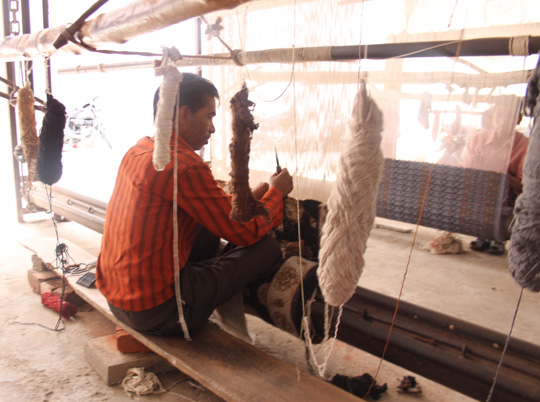 The technique of the „knots“, as we presently know it , is the fruit of a very long evolution. 600.000 Knoten/ per qm are necessary for a silk carpet. 280.000 single knots per qm for a wool carpet. 8.000- 10.000 knots a good worker gets done per day.
The technique of the „knots“, as we presently know it , is the fruit of a very long evolution. 600.000 Knoten/ per qm are necessary for a silk carpet. 280.000 single knots per qm for a wool carpet. 8.000- 10.000 knots a good worker gets done per day.
 |
| here the in house carpet washing area at Channi Carpets |
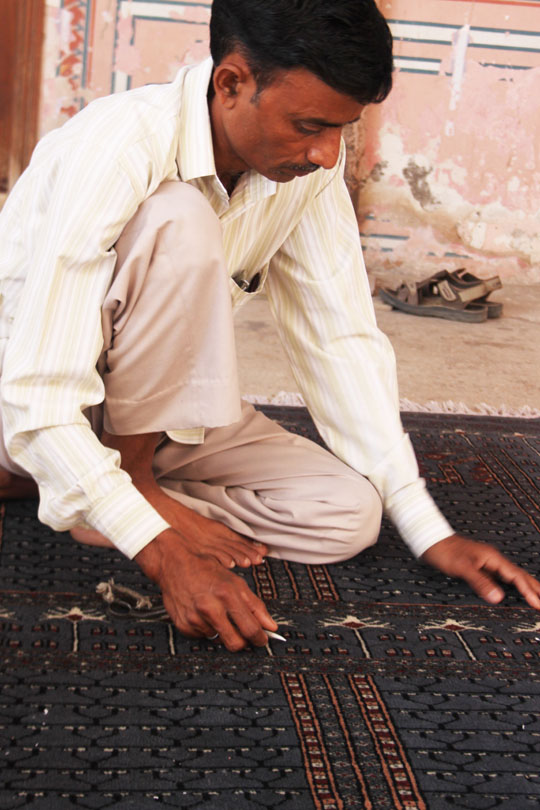 |
| taking out the little mistakes |
Clipping the carpet to get the designs look nice.
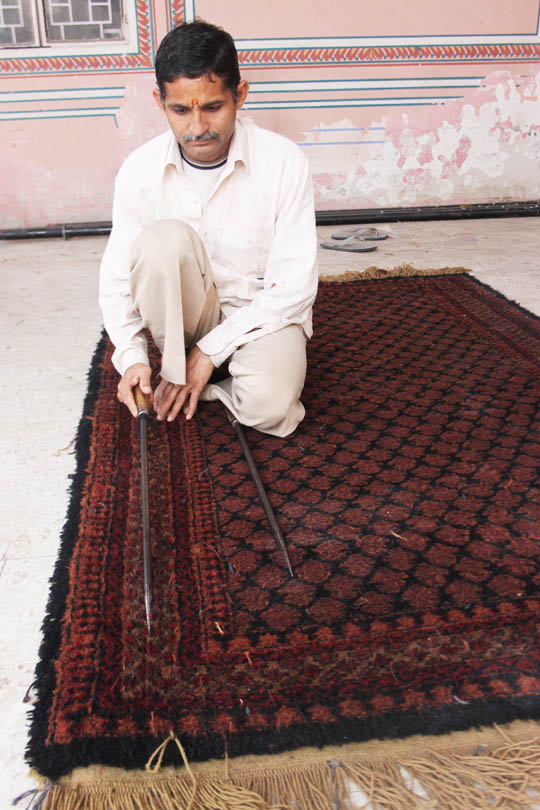
Knotting the frills. After that all the frills are cut even. Also the sides of the carpet need a finish binding.
Auch heute werden häufig noch klassische persische und chinesische Muster verwendet.
The colors used in a carpets and cotton rugs are more subtle. Vegetable dyes are used for coloring the yarn. All shades of red, green, yellow, blue are used predominantly. The yarns used in these carpets are either silk or wool or a combination of the two. Many of these carpets are also cotton carpets. Herbs are used to make the carpets look antique, such as henna, curcuma and tea water.
More info you will find here: www.channicarpets.com



